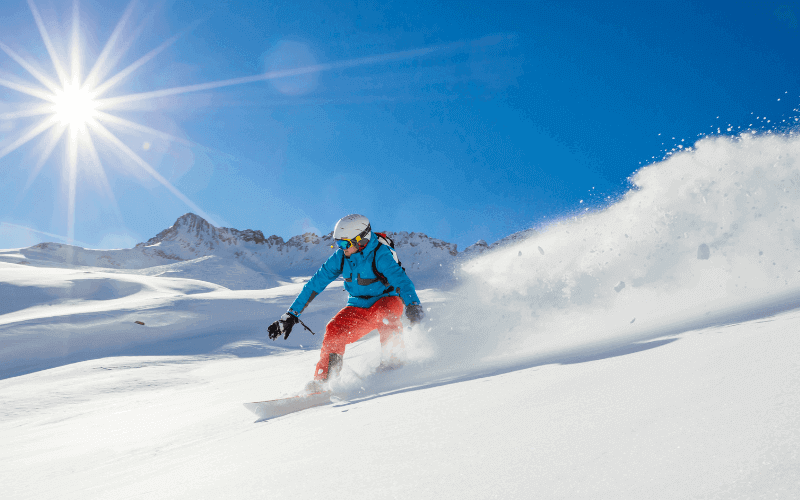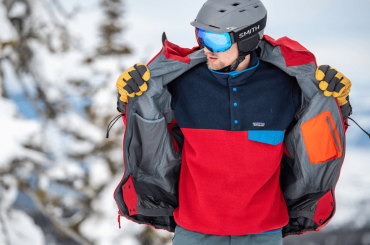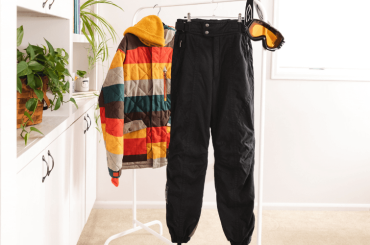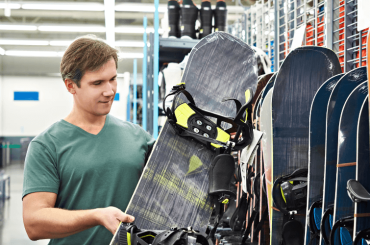If you’re new to the snowboarding world, you may be wondering what “freeride” snowboarding is.
Freeride boarding is all about exploring the terrain and finding natural features to ride. But what exactly is freeride snowboarding? And why is it so popular?
In this post, we’ll explore these questions and more. Keep reading to learn everything you need to know about freeriding snowboarding!
freeride snowboarding
Freeride snowboarding is a type of snowboarding where riders go off-piste and away from the groomed runs. They often ride in backcountry terrain, where there are no trails or paths. Freeriding can be done in the powder (fresh snow), on packed snow or even on ice.
It is considered to be more challenging than traditional snowboarding, as riders have to navigate through different types of terrain and conditions.
Riders usually equip themselves with specialized gear such as avalanche beacons and shovels, which help them stay safe in case of an emergency.
Freeriding is also a more dangerous form of snowboarding, as many potential hazards are involved such as avalanches, trees and rocks.
Despite the risks, freeriding is an incredibly exhilarating experience that allows riders to explore the mountains in a new way.
It is a true test of one’s snowboarding skills and requires a great deal of technique and control.
For those who are up for the challenge, freeriding can be an extremely rewarding experience. Freeride snowboarding can be divided into two main subcategories: big mountain and freestyle.
Different Types of Freeride Boards
There are four main types of freeride boards: all-mountain, big mountain, powder and park.
1. All-mountain
All-mountain boards are versatile and can be ridden in various terrain and snow conditions. All-mountain boards typically have a directional shape with a longer nose and a shorter tail.
They also have a stiffer flex pattern for stability at high speeds and increased edge hold on hard-packed snow. All-mountain boards usually have a waist width of 25-26 cm.
2. Big mountain
Big mountain boards are designed for riding in steep and deep powder conditions.
They have a longer nose and a shorter tail than all-mountain boards and they also have a wider waist width for increased floatation in deep snow.
Big mountain boards typically have a softer flex pattern for easier maneuverability in powder.
3. Powder
Powder boards are lightweight and have a shorter nose to help float in deep powder. Powder boards are designed specifically for riding in deep powder snow.
They have a wide nose and a short tail, as well as a wide waist width for increased floatation. Powder boards also have a very soft flex pattern.
4. Park
Park boards are designed for riding in man-made terrain parks and doing tricks. They usually have a twin-tip shape for symmetry and easier switch riding, as well as a soft flex pattern for easy maneuverability in the park.
Park boards also often have Jib tips, which are rounded tips that make it easier to slide on rails and boxes.
How do you choose the right freeride board for you and your riding style?
When it comes to choosing the right freeride board for you, there are a few things you’ll want to keep in mind.
- First, consider your riding style and the type of terrain you’ll be riding on most often.
- If you’re looking for a versatile board that can handle a variety of conditions, then an all-mountain freeride board may be the best option for you.
- If you know you’ll be mostly riding in powdery snow, then a powder-specific freeride board would be a better choice.
- Another thing to consider is the amount of aggression you want to ride with.
- If you’re interested in doing more aggressive riding, such as hitting cliffs and jumps, then a freestyle-freeride board would be the best option.
- Ultimately, it’s important to choose a board that will match your riding style and the conditions you’ll most often be riding in.
What are the benefits of freeride snowboarding?
There are many benefits to freeride snowboarding.
1- Ability to ride anywhere
Freeride snowboarding allows you to ride anywhere on the mountain. There are no set trails or boundaries, so you can explore the entire mountain.
This gives you the freedom to find the best powder stashes and make your own line choices.
2- Control and Stability
Freeride snowboards are designed for stability and control at high speeds. They are often longer and wider than other types of snowboards, which makes them more stable when carving turns or riding in powder.
3- Flexibility
Freeride boards also offer increased flexibility, which is beneficial for riders who want to perform tricks and spins. The extra flexibility also makes the board more forgiving if you land a jump incorrectly.
4- Versatile
Freeride snowboarding offers riders a more versatile experience than other types of snowboarding.
Riders can explore different terrain and conditions and find new challenges as they progress.
5- Durable
Additionally, freeride boards tend to be more durable than other types, making them ideal for riders who want to spend more time on the mountain.
Where can you find more information about freeriding snowboarding and where can you go to learn more and try it out for yourself?
There are many ways to get more information about freeriding snowboarding.
1. Read articles: Try searching for “freeriding snowboarding” on a search engine like Google and reading articles about it from websites.
2. Watch videos: There are lots of great instructional and informational snowboarding videos available online. Search for “freeriding snowboarding” on YouTube or another video-sharing website and watch some of the top results.
3. Join a forum: There are many forums dedicated to snowboarding where you can ask questions and get advice from more experienced riders.
4. Take a lesson: If you’re serious about learning how to freeride, the best way is to take a lesson from a certified instructor. Many resorts offer freeriding lessons for all levels, from beginner to advanced.
5. Find a group to ride with: One of the best ways to get into freeriding is to find a group of friends or fellow riders who are into it and go riding with them. This way you can learn from each other and progress together.
6. Go to a freeriding event: There are often freeriding competitions and events happening around the world that you can attend. These are great places to watch and learn from the best riders in the world and maybe even meet some new friends.
FAQs – freeride snowboarding?
What’s the difference between freeride and all mountain snowboards?
The main difference between freeride and all mountain snowboards is the shape of the board. Freeride boards are designed with powder riding in mind and often have wider noses and tails, making them better at floatation in deep snow.
All mountain boards are more versatile for riding, with a shorter length and narrower width. All mountain snowboards are designed to perform well in a variety of conditions, from groomers to powder.
How many snowboarding styles are there?
There are four main snowboarding styles. Each style has its unique characteristics and riders often specialize in one or two of them.
1. Freestyle: Freestyle is the most popular snowboarding discipline and it includes tricks and maneuvers performed in a half-pipe, on jumps or on rails and boxes in the terrain park.
2. Freeride: Freeride snowboarding is all about tackling ungroomed terrain and natural features like trees, cliffs and powder.
3. Alpine: Alpine snowboarding is similar to downhill skiing and riders race down groomed slopes at high speeds.
4. Backcountry: Backcountry snowboarding takes place away from the crowds and lifts lines, in remote areas where riders can explore untouched powder.
Can you ride a freestyle board in powder?
Yes, you can ride a freestyle board in powder, but it can be more difficult than riding a powder board.
Freestyle boards are designed for riding in parks and on groomed snow, so they don’t have the same floatation as powder boards.
However, if you’re an experienced rider and you know how to handle your board in deep snow, you can ride a freestyle board in powder. Just be prepared for some extra work!
Final Words
Freeride snowboarding is a type of riding that takes place on ungroomed mountain terrain. Freeriders often seek out natural features such as powder, bumps and trees.
The goal is to ride in control at high speeds and perform big airs off of jumps. Whether you’re a beginner or an experienced rider, freeriding can be an exciting way to enjoy the mountains.
If you’re thinking about giving freeriding a try, make sure you have the appropriate equipment and safety gear and find a good spot to practice before hitting the backcountry. With some preparation and practice, you’ll be shredding untracked powder in no time!





